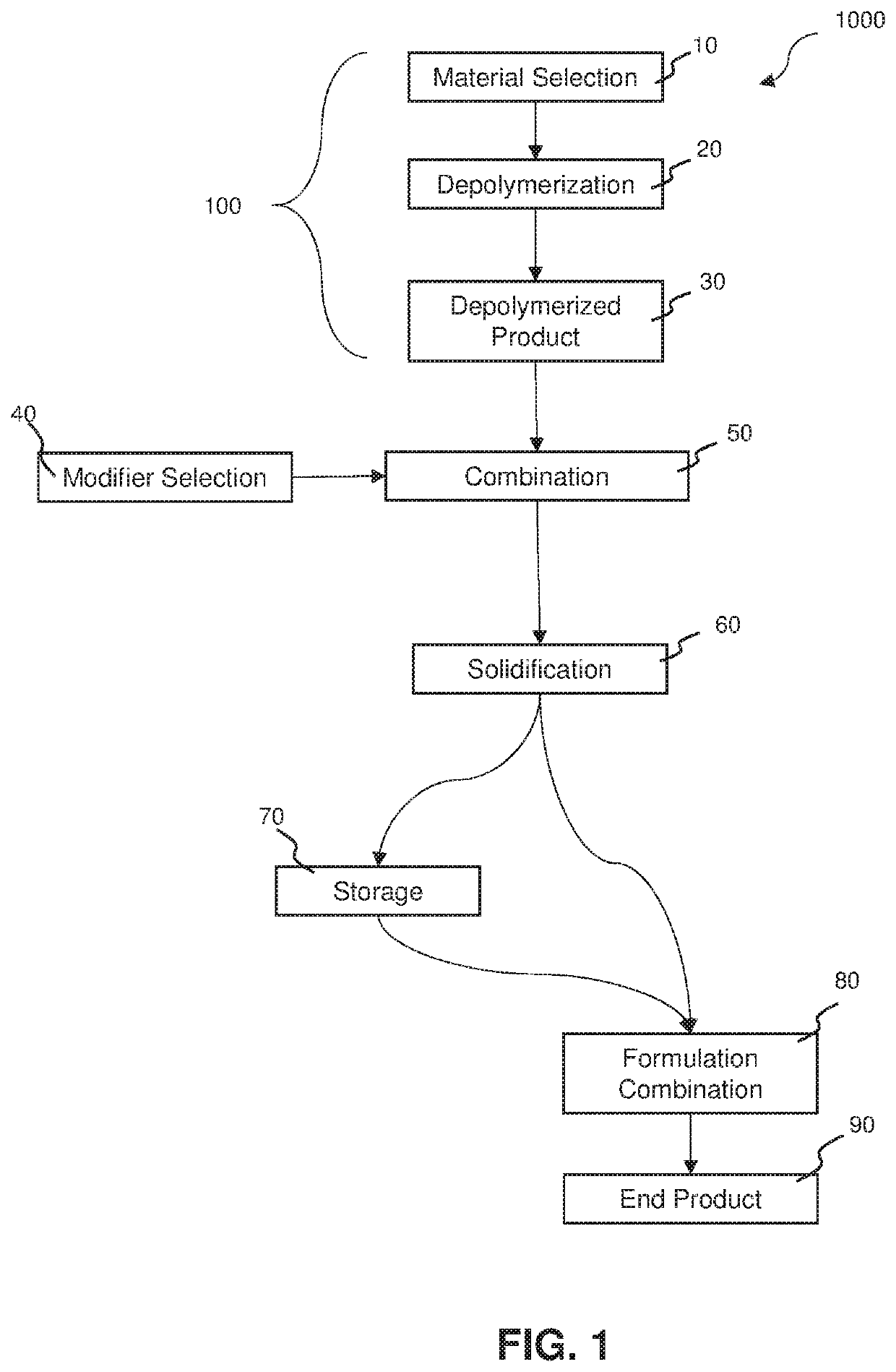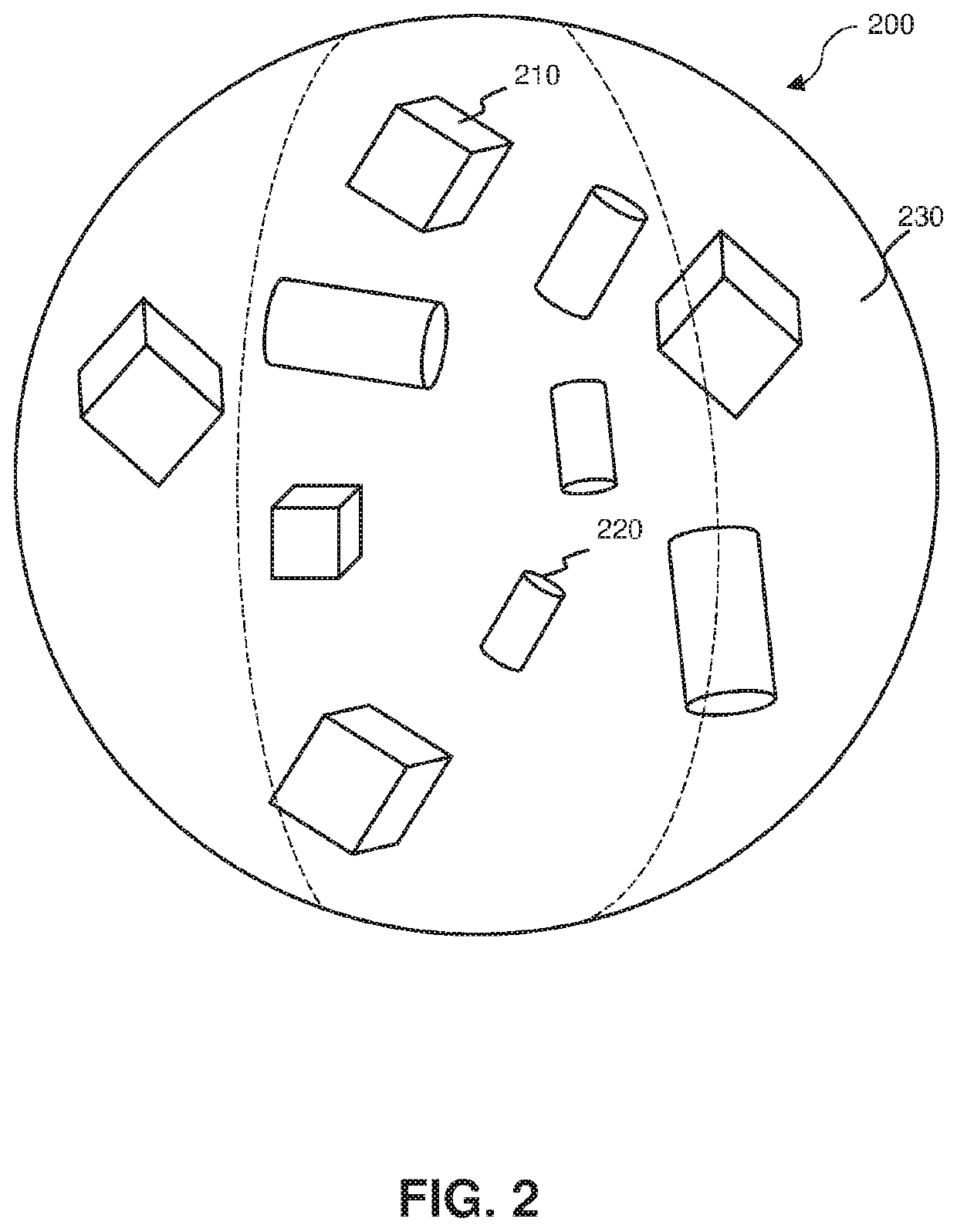Encapsulation of Modifiers in Depolymerized Products
a modifier and depolymerization technology, applied in the field of encapsulation of modifiers, can solve the problems of difficult blending and forming materials, complex and tedious mixing of components to achieve uniformity, and limited solubility/compatibility of components
- Summary
- Abstract
- Description
- Claims
- Application Information
AI Technical Summary
Benefits of technology
Problems solved by technology
Method used
Image
Examples
specific example 1
[0073]In one embodiment of the above method, 500 g of micronized tire rubber with an average diameter of 30 micron was mixed with 500 g of melted wax by stirring a paddle mixer at 30 rpm at 125° C. for five minutes. The resulting product was then poured into 0.5″ (1.27 cm) diameter forms and allowed to solidify. The resulting product was able to be placed in a storage container before blending it into an asphalt formulation.
[0074]Remelting experiments demonstrated that the tire rubber integrity was maintained. This demonstrated that the process prevented, or at least reduced, agglomeration of the particles and / or modification of the particles. Remelting experiments also demonstrated that the 30-micron powder could be dispersed upon melting of the depolymerized product.
specific example 2
[0075]In one embodiment of the above method, 500 g of carbon graphite powder was mixed with 500 g of melted wax by stirring a paddle mixer at 30 rpm at 125° C. for five minutes. The resulting product was then poured into a 0.5″ (1.27 cm) diameter form and allowed to solidify. The resulting product was able to be placed in a storage container before blending it into an asphalt formulation.
[0076]Remelting experiments demonstrated that the graphite particle did not agglomerate and its integrity was maintained and that the 30-micron powder could be dispersed upon melting of the depolymerized product.
[0077]Changes in melting point, viscosity, molecular weight, and / or polymer backbone structure of the depolymerized product can change the properties of a formulation. Properties can include, but not limited to, the force ductility, thermal stability, softening point, phase separation, and / or penetration of the formulation.
[0078]Encapsulating modifiers in depolymerized products can provide t...
PUM
| Property | Measurement | Unit |
|---|---|---|
| size | aaaaa | aaaaa |
| melting points | aaaaa | aaaaa |
| melting points | aaaaa | aaaaa |
Abstract
Description
Claims
Application Information
 Login to View More
Login to View More - R&D
- Intellectual Property
- Life Sciences
- Materials
- Tech Scout
- Unparalleled Data Quality
- Higher Quality Content
- 60% Fewer Hallucinations
Browse by: Latest US Patents, China's latest patents, Technical Efficacy Thesaurus, Application Domain, Technology Topic, Popular Technical Reports.
© 2025 PatSnap. All rights reserved.Legal|Privacy policy|Modern Slavery Act Transparency Statement|Sitemap|About US| Contact US: help@patsnap.com


